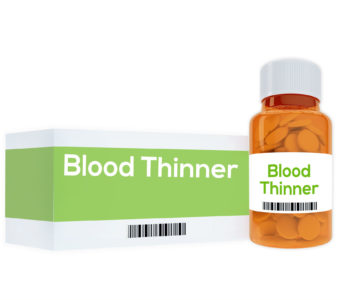 The following is a guest post from Leticia, a reflexologist and state certified piercer. She reached out to us with some more information on the Daith piercing, and we wanted to turn her message into a blog post because we feel that our readers could benefit form the information. Here’s what she mentioned in her original message.
The following is a guest post from Leticia, a reflexologist and state certified piercer. She reached out to us with some more information on the Daith piercing, and we wanted to turn her message into a blog post because we feel that our readers could benefit form the information. Here’s what she mentioned in her original message.
Which Ear to PIerce?
Many of you have asked which ear to pierce. It all depends on the strongest pressure point. When I do these I always check both ears, talk to my clients about the problems they’re having and what bothers them most before proceeding. It not just a stab and go procedure. I love my job and help as many people as I can. I have people drive and fly in to have me do their pressure point piercing due to my accuracy.
I have no problem explaining the full procedure. Pain stops a lot of people from enjoying life so I try my best to make their life great by stopping their pain. Many piercers will say they can do this but unless its done a specific way it will not work. It must be done through the pressure points.
To be done correctly a pressure point locator must be used to find the point; It isn’t just a random area in the daith. Once the pressure point is located, it is then pierced and jewelry is inserted. I am a reflexologist and also a state certified piercer that works in pressure point piercing everyday. I have had 100% success rate with these piercings. It can cure many different migraines such as fibromyalgia headaches/migraines, occipital neuralgia headaches/migraines and more in the right situation.
Just because one person does it one way and another does it different doesn’t mean it doesn’t work, because I have different techniques work for different clients. It can change a person’s life and the positive testimonials I have received has been amazing. Men, women and children have came to see me for their chronic migraines.
Thank you Dr. Cohn for your website. And allowing me to post here.
 Chronic pain affects roughly 100 million Americans, and the pain management market is estimated to be about $635 billion a year. With so many people to treat and money to be made by finding new, safer treatment options, a number of different technology companies are jumping into the world of pain management.
Chronic pain affects roughly 100 million Americans, and the pain management market is estimated to be about $635 billion a year. With so many people to treat and money to be made by finding new, safer treatment options, a number of different technology companies are jumping into the world of pain management. Everyone has advice on living better and longer. Sometimes the advice is complex, sometimes someone is just trying to sell you something, and in a recent StarTribune issue, there was some simple practical advice. The information is from a study of 100,000 people published originally by the American Heart Association. It lists five habits to adopt to live better and longer. It is the straightforward approach to life.
Everyone has advice on living better and longer. Sometimes the advice is complex, sometimes someone is just trying to sell you something, and in a recent StarTribune issue, there was some simple practical advice. The information is from a study of 100,000 people published originally by the American Heart Association. It lists five habits to adopt to live better and longer. It is the straightforward approach to life.
 Every year, the majority of physicians need to attend continuing education courses. Sometimes these are online or via written materials, while others are seminars. This year I am on my second course, because unfortunately not all work qualifies for credits. The last course was extremely educational, but was sponsored by a medical corporation and therefore did not qualify for credit.
Every year, the majority of physicians need to attend continuing education courses. Sometimes these are online or via written materials, while others are seminars. This year I am on my second course, because unfortunately not all work qualifies for credits. The last course was extremely educational, but was sponsored by a medical corporation and therefore did not qualify for credit.